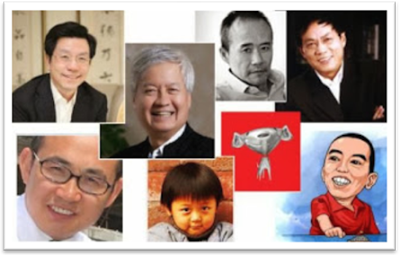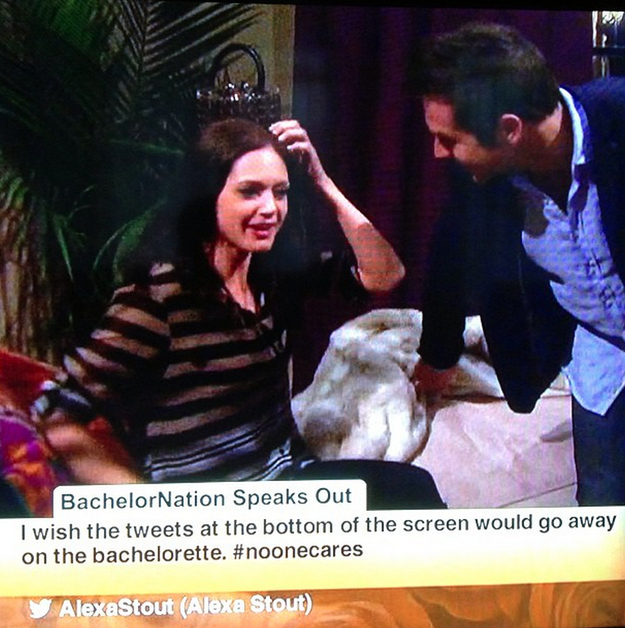This is another in a series of blog posts written by students from my Public Intellectuals seminar in USC's Annenberg School of Communication and Journalism.
Chivalry is Dead: SUBA51's Killer Is Dead, Gigolos, and The Status of (Virtual) Women
by James B. Milner
I usually don’t purchase video games without doing my homework. This could take a number of forms. I tend to stick to companies which have produced the games I have loved the most in the past. I closely read reviews from sites like IGN and GameSpot, even though I often take the reviews with a grain of salt. In the buildup to the release of a new title, I will watch any number of video clips to get a sense of whether I will enjoy playing the game, and whether or not it would be worth $60 to get it when it comes out. All of this, and also I keep in touch with the associates at my favorite game store, who let me know what people with tastes similar to mine are reserving.
Ignoring most of my usual tricks, I bought Killer is Dead brand new knowing very little about it. I was informed that it was an indirect sequel to Killer 7 (which I had not played, but had heard good things about) and was by the same Japanese developer (SUBA51) who was behind the No More Heroes franchise. I had played No More Heroes and enjoyed it: I thought it a bit simplistic, and a touch repetitive, but stylish and fun and even a little challenging at times, and overall weird and unique, these last being right up my alley game-wise. And it was a limited edition, which again appealed to me as a collector (I haven’t recreated the shrine since I moved to California, but in Michigan I had all of my boxed sets, art books, stuffies, and other assorted paraphernalia on display on a series of bookcases). So I plunked down my $60 and took it home with me.
And then I read the GameSpot and IGN reviews. Mind you, this post is not a review, nor is it even about the game’s reviews, strictly speaking. It concerns, in large part, a debate about sexism in the game that takes place in the comments on the reviews. It is, however, important for the sake of the discussion to spend a little time on the reviews themselves. And the reviews were—mixed. And consistent. The major knock on the bulk of the action in the game, the fighting, boiled down to this: all you have to do to succeed is alternate between A) simply mashing on the buttons and then B) pressing the dodge button when an enemy attacks. And then I watched gameplay footage, to see if, reviews notwithstanding, I might still enjoy the game, and this criticism seemed to be borne out. Take a look and you’ll see what I mean:
And the only other piece to the puzzle for this game, the only other thing to do in it that doesn’t involve this circuit, are the unfortunate Gigolo Missions.
I say unfortunate—I of course haven’t played the game, which is why this isn’t at all a review, and although from here on out I will be referring to the GameSpot and IGN reviews of the game, it’s really not about those reviews either. But what I found there was enough to make me question whether I could in good conscience play the game and get any enjoyment out of it. Both Marty Sliva of IGN and Mark Walton at Gamespot reported an uneasy relationship (to say the least) with the Gigolo Missions. But what are the Gigolo Missions?
Basically, the goal is to have sex with a virtual woman. How is this accomplished? First, you sit down at a bar next to a woman and order a drink. Then, you ogle her, looking at the appropriate places on her body (you’ll know what you should be looking at, because the area under your gaze will light up if, say, you should be staring at her chest, legs, or crotch). Stare at her enough (without saying anything, mind you), and she’ll ask you for a gift. Gifts are found or bought elsewhere in the game, and, if you bought the limited edition of the game or downloaded some extra content, you got special Gigolo Glasses which will give you a hint as to what she wants (and, of course, give you X-ray vision). Give her the right gift, and you’ll get to sleep with her. And then you’ll be rewarded with a special item. Mission accomplished.
Lest you think I’m making this up, here’s a clip:
The Gigolo Missions are optional, but not strictly so: sometimes the reward item can only be obtained through a Gigolo Mission, and playing the game without these items makes the game more difficult or less interesting in terms of the action. So that you can skip them and still complete the game, but you may make it much harder on yourself if you do. And I had to ask myself whether I could suffer through this aspect of the game to keep it interesting in the action sequences, or if I could skip them as I would have liked to have been able to do without suffering through even more repetitive fights. My answer was a resounding “no” on both counts, so I returned the game unopened and unplayed. The discomfort expressed by the reviewers over the Gigolo Missions, combined with my own disdain for game content which turns virtual women into hollow sexual shells, made it impossible for me to consider keeping it.
Where this really gets interesting is not in the two (male) reviewers’ accounts of their discomfiture as playing the Gigolo Missions, who describe these missions with phrases like “digital creeper” and “filth” and expressed how these missions “felt weird” to play. What is really interesting for me is the discussion that springs up in the comments, and how some participants in this discussion took an antifeminist stance based on a few lines of criticism of the Gigolo Missions in the reviews.
The reviews pointed out misgivings about the misogyny and objectification of women in the Gigolo missions, but in larger part they pointed out technical flaws that contributed to the low scores of the game. This didn’t stop a subset of commenters from focusing on the former criticisms. Some of these comments were what is (unfortunately) pretty standard anti-feminist fare in gamer circles:
GasFeelGood: “People are tired of seeing Internet Feminists forcing opinions as facts and pushing the politicizing of what is imaginary entertainment. This has turned into a cult and this crap operates like organized religion now.
“We want to play games and discuss games, not pseudo-intellectual philosophizing political and social crap that has no significance whatsoever.
“There is no place for subjective political opinion in professional reviews.” To which KillaShinobi replied “They are like Nazis except not intelligent enough to get everyone in on their cause but surely misguided.” (GameSpot)
Atalalama: “It's gotten to the point anymore that ANY time a "professional game reviewer" (ie: Panders to what's Socially Fashionable of The Hour, Blathers Gender-Fascism, and/or Comes with a Creamy Undercoating of Purityranical Tropes) slams a game for "degrading women" in some imaginary way, I go out and buy it.” (GameSpot)
IceVagabond: “Here we go again with the neo-feminist nonsense... can we go back to having reviews that critique the actual game more than promote a spiteful (and moreover completely irrelevant) ideology?” (GameSpot)
In these comments, one gets an equation of feminism with Nazism and fascism, as if feminism were concerned with a dogmatic imposition of a coherent and simplified ideology, rather than the breaking down of an entrenched dominant ideology of male privilege. Feminism is multiple, with a variety of aims and a variety of means to achieve these aims, and while there is general agreement that the degradation of women is something to be fought against (rather than a selling point for entertainment media) and that women should be treated equitably, just what this means and how this plays out is so multifaceted that one should hesitate to call it an ideology. But if even if it is granted that it is an ideology, it is not a “completely irrelevant” one that has “no significance whatsoever”: if pointing out that the act of scoping out a virtual woman’s body for sexual favors makes one a “digital creeper” leads to charges of Nazism then clearly the movement has a lot of work to do. And if a culture of virtual objectification doesn’t seem relevant enough, one can get a sense of the broad context of gamer misogyny and anti-feminism by looking at sites like Not in the Kitchen Anymore, Fat, Ugly or Slutty, Kotaku, or The Mary Sue to find an alarming number of disturbing stories of harassment and threats, including threats of rape and other sexual violence, made by male gamers against female gamers, both generally speaking (almost, apparently, as sport) and particularly when speaking up about these very threats or sexism in gaming generally.
Then there are those who downplay the significance of this type of depiction of women:
Christoffer112: “blablabla femenism bla bla bla, who cares.. it''s a game.” (GameSpot)
rnswlf: “ I'm sorry that you are seemingly too intimidated by the female form to appreciate a little light hearted fun.” (GameSpot)
1983gamer: “Also am I the only one who is tired of all the politics and Hippocratic bull crap that is going on in the gaming community? Really reviewer are complaining about bi-gist sexism in games? Really have we forgotten that video games are a art form? Gamers and reviewer alike. First dragon crown now this?? Its really sicking. The Hippocrates that condemn these games are the worse. No one complains when james bond has sex with a random woman..or halie berry having sex. So if you are one of these people male or female, stop using double standards and review or play the game based on how good the game is. Oh and maybe grow up and not watch sexiest movies or play sexist video games.” [33 votes up, 3 votes down] (IGN)
Kratier: “next time you see an attractive male portrayed in a video game you should call it sleazy as well. unless you know, you're a hypocrite “ (GameSpot)
AugustAPC: “I mean it's not like I'm going to pretend these are real women or anything. Seriously, why should anyone give a f*ck if women are portrayed as hypersexual whores in a game that doesn't take itself seriously? It's in all kinds of media. Shut your brain off and enjoy it or don't play it. There are plenty of male tropes that are just as negative in video games. Why can a man-slut blindly f*ck any chick he wants in gaming, but girls can't do the same? Double standards.” [18 votes up, 0 down] To which Ultimatenut replied: “Because in this particular game, the sex missions are just plain weird. You stare a girl in the eyes and when she's not looking, you stare at her tits and legs. Then you use your X-ray glasses to look under her clothes. And, apparently, as a result of doing this, she goes home with you.” [3 votes up, 0 down] (IGN)
The charge of “double standards” when there is outcry over the objectification of women in games but not the same outcry when men are objectified is a classic argument (both Kratier and AugustAPC go to this well), but of course ignores the power differential between men and women. Men never lose their fundamentally dominant position in society even when they are objectified, while women are consistently subordinate, objectification being a constant aggravation of this. During the making of Animal House, Karen Allen expressed misgivings about showing her bare behind on screen, so John Landis added a similarly gratuitous shot of Donald Sutherland’s rear end, as if this balanced it out. Allen was apparently put at ease, but maybe she shouldn’t have been: as a young, particularly female actor, her half-nude shot risked her being pigeonholed into “beautiful ingénue who does nude scenes”, while Sutherland’s shot risked nothing. His shot was safe both because he was a well-established actor at the time but also because, as a man, he had little fear of not being taken seriously when he needed to be. In other words, for Sutherland, it was “a little light hearted fun”, but for Allen it was a risky career move. The double standard is not in the criticism of objectification, but in society as a whole. For AugustAPC, the fact that the women are virtual “hypersexual whores” removes them from the sphere of reality, where such things would matter, to the sphere of representation, where they (supposedly) don’t, and that the fact that Karen Allen is a real woman negates my analogy since we are discussing the virtual. But the double standard remains even in a virtual space. A “man-slut” is hardly ever referred to pejoratively, but is more often called a “stud” or, tellingly, “the man,” while negatives like “whore” or “slut” are the weapons of choice for referring to women who “get around.” This means that virtual “hypersexual whores” are a problem in a way that “man-sluts” are not because this trope perpetuates in a virtual space the very real inequality that separates the positive connotations of a sexually active man from the negative connotations of a sexually active woman. Representations draw their content from reality, and as such they have the power to perpetuate this type of inequality or to seek to transform it. Killer is Dead sticks closely to the former. The idea that sexism is innocuous when found in something that is “just a game” ignores the fact that such representations reinforce the reality of sexism pervasive in the broader culture, and in doing so help make it seem natural and inevitable.
Two comments in particular are worthy of note, one from each site, since I think they get at the heart of the problem. The first commenter, pseudospike, seems to be attempting to dismiss the charge that the Gigolo missions would be off-putting or offensive to female gamers by posting the following video of professional gamer Jessica Negri playing the missions:
His comment is: “What's this then, double reverse backwards misogyny!?” (GameSpot) He seems to be trying to play up Negri’s apparent enjoyment of the mission she plays in the video and suggesting that women (as a varied set of individuals) shouldn’t be offended by them because this one woman (Negri) was not, and in fact seemed to have fun while playing. Of course, one can’t decide finally on the basis of the video whether Negri really enjoyed playing the Gigolo Missions or if she was forcing it because she was getting paid to do so. Offering Negri as a representative for women enjoying playing the Gigolo Missions is therefore problematic at best. The idea that one woman’s view negates a flood on the other side is short-sighted and fallacious, and ultimately damaging to the discussion, since it dismisses out of hand the very real concerns of those women (and men) opposed to this type of depiction of women and sexuality. And it is similarly fallacious to point to a woman who is being paid to enjoy what she is doing. Thus, without the irony, this video, or at least its use in the comment thread, may indeed be “double reverse backwards misogyny.”
And then there is DrakeNathan: “It is way too fashionable for game reviewers in the California area to be offended by sexual depictions of women. Honestly, it's so nauseating listening to these guys try to get a piece by showing how sensitive they are. I know, I shouldn't assume motives, and I do apologize for doing it, but it's certainly trendy in game reviewer circles for dudes to be offended by things most girls aren't offended by. […] There's a reason I don't watch certain shows or play certain games, and that's because they aren't made for me. I shouldn't review them.” [19 votes up, 5 down] (IGN, my emphasis)
The point that DrakeNathan misses is that he is basically telling female gamers not to play games at all, because, as numerous gamers and theorists have pointed out, games, especially those for consoles, are almost exclusively made for men. Female gamers must choose from among the games that exist, and since the video game industry has been extremely reluctant to produce gender-neutral or female-oriented games, this means dealing with misogyny, hypersexualization, and objectification to do something they love to do. When a game goes beyond the pale, and introduces gratuitous fantasy sequences such as the Gigolo Missions where women literally ask to be compartmentalized into their most sexually charged body parts, where they want to be gazed at without being spoken to, and where an expensive gift is all that is required for sex, of the one-night stand variety no less, one has to wonder if video game companies are making any progress at all.
The ultimate irony is that while a lot of the comments on the reviews defended SUDA51’s artistic vision in the released version of Killer is Dead, he himself did not:
Kiaininja: “Suda never intended to make KID into a Weaboo eroticism. KID originally was supposed to have a clean deep story of Mondo being a family man surviving to protect them but Suda's boss ordered him to sexualize and add gigolo to the game and as a result fucked up the story and the game's original vision.” (GameSpot)
Here is the interview the user cites:
So why did I feel the need to reject Killer is Dead? Couldn’t I just get past the parts I found offensive and play it for the lighthearted and tongue-in-cheek game that it is? Isn’t it “just a game”? Or can it be read as a sign of a tendency of the video game industry to pander to a subset of the audience that likes its virtual women shallow and easy? Can one see it as an indication that the representation of women in video games remains highly problematic? And, in that light, can’t one understand that the defensiveness of those comments I have singled out here against any call for change to this trend of problematic representations is itself a big part of the problem? In the end, even the game’s developer thought that the Gigolo Missions were unnecessary and detracted from the game, but commercial interests won out over artistic vision. As it turned out, maybe SUDA51’s company was right—the controversy over the missions probably sold more copies of the game out of sheer curiosity (or, as in some of the comments, spite) than it lost sales due to disgust or outrage. Sex sells, and so, apparently, does sexism. But to allow sexism to remain an inevitable part of the industry is not acceptable, for at least two reasons. First, for some of the reasons I outlined above, representations in media have real consequences, and reactionary representations that reinforce an unacceptable status quo have a naturalizing effect which stifles progress. And second, because I suspect that those who desire sexism in their games are far outnumbered by those who tolerate it or suffer it, so that in the end it is unnecessary to sell games. The broader issue remains—sexual and gender equality is a far off ideal, and in many ways it seems farther than usual when looking at the games industry and gamer culture. But Killer is Dead is just one game, and the comments I selected are representative of one side of the argument over sexism in games, a vocal and fairly coherent side but still not the only game in town. It would seem to me that the way forward would be for all sides of the argument, everyone with a stake in the discussion, to voice their concerns in open forums where they can be heard. The real problem with this rather rosy solution is that, as one gets a taste of in a few of the comments I have quoted, there is a real sense in which civil discussion is not everyone’s goal—and this not only on the side of the argument I’m trying to counter here (dismissive terms like “troglodyte,” “ogre,” “moron,” and “idiot” crop up in responses on the other side). But civility is an attainable ideal, at least on a personal level, and I have tried to treat the commenters I’ve quoted here with respect even as I disagreed with them. Hopefully I have succeeded, at least in a small way, in pushing forward a civil discussion.
James Milner is a Ph.D. student at USC Annenberg whose research lies at the intersection of video games, philosophy, and education. He is also interested in issues of gender and race within video games themselves and in the broader gamer culture. He is an avid gamer, but never seems to be able to find the time anymore to play anything except FarmVille 2.











 Katie Walsh is a writer, critic, academic, and blogger based in Los Angeles. She has contributed film reviews, TV recaps, and interviews to the
Katie Walsh is a writer, critic, academic, and blogger based in Los Angeles. She has contributed film reviews, TV recaps, and interviews to the 
























